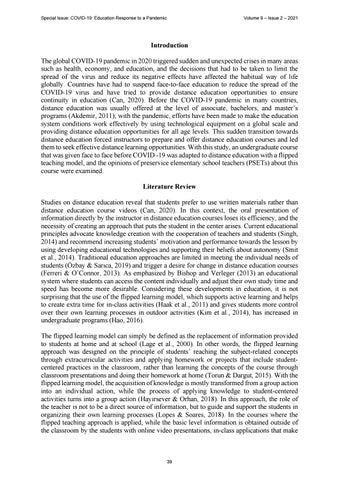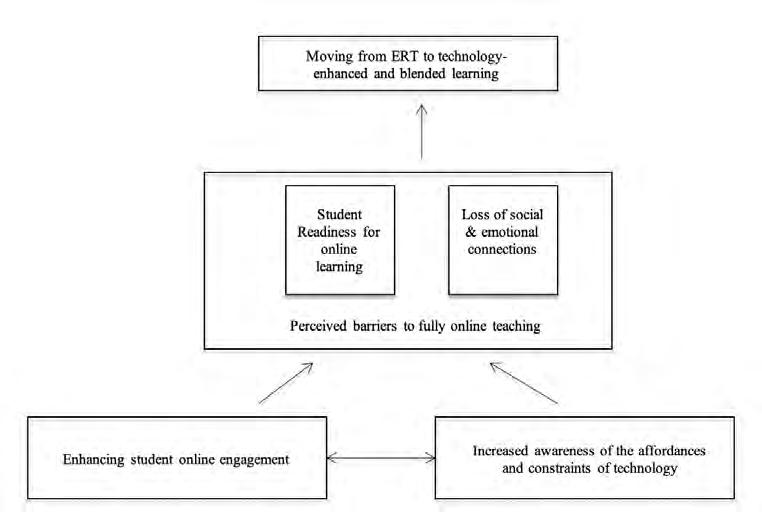Special Issue: COVID-19: Education Response to a Pandemic
Volume 9 – Issue 2 – 2021
Introduction The global COVID-19 pandemic in 2020 triggered sudden and unexpected crises in many areas such as health, economy, and education, and the decisions that had to be taken to limit the spread of the virus and reduce its negative effects have affected the habitual way of life globally. Countries have had to suspend face-to-face education to reduce the spread of the COVID-19 virus and have tried to provide distance education opportunities to ensure continuity in education (Can, 2020). Before the COVID-19 pandemic in many countries, distance education was usually offered at the level of associate, bachelors, and master’s programs (Akdemir, 2011); with the pandemic, efforts have been made to make the education system conditions work effectively by using technological equipment on a global scale and providing distance education opportunities for all age levels. This sudden transition towards distance education forced instructors to prepare and offer distance education courses and led them to seek effective distance learning opportunities. With this study, an undergraduate course that was given face to face before COVID -19 was adapted to distance education with a flipped teaching model, and the opinions of preservice elementary school teachers (PSETs) about this course were examined. Literature Review Studies on distance education reveal that students prefer to use written materials rather than distance education course videos (Can, 2020). In this context, the oral presentation of information directly by the instructor in distance education courses loses its efficiency, and the necessity of creating an approach that puts the student in the center arises. Current educational principles advocate knowledge creation with the cooperation of teachers and students (Singh, 2014) and recommend increasing students’ motivation and performance towards the lesson by using developing educational technologies and supporting their beliefs about autonomy (Smit et al., 2014). Traditional education approaches are limited in meeting the individual needs of students (Özbay & Sarıca, 2019) and trigger a desire for change in distance education courses (Ferreri & O’Connor, 2013). As emphasized by Bishop and Verleger (2013) an educational system where students can access the content individually and adjust their own study time and speed has become more desirable. Considering these developments in education, it is not surprising that the use of the flipped learning model, which supports active learning and helps to create extra time for in-class activities (Haak et al., 2011) and gives students more control over their own learning processes in outdoor activities (Kim et al., 2014), has increased in undergraduate programs (Hao, 2016). The flipped learning model can simply be defined as the replacement of information provided to students at home and at school (Lage et al., 2000). In other words, the flipped learning approach was designed on the principle of students’ reaching the subject-related concepts through extracurricular activities and applying homework or projects that include studentcentered practices in the classroom, rather than learning the concepts of the course through classroom presentations and doing their homework at home (Torun & Dargut, 2015). With the flipped learning model, the acquisition of knowledge is mostly transformed from a group action into an individual action, while the process of applying knowledge to student-centered activities turns into a group action (Hayırsever & Orhan, 2018). In this approach, the role of the teacher is not to be a direct source of information, but to guide and support the students in organizing their own learning processes (Lopes & Soares, 2018). In the courses where the flipped teaching approach is applied, while the basic level information is obtained outside of the classroom by the students with online video presentations, in-class applications that make
39



